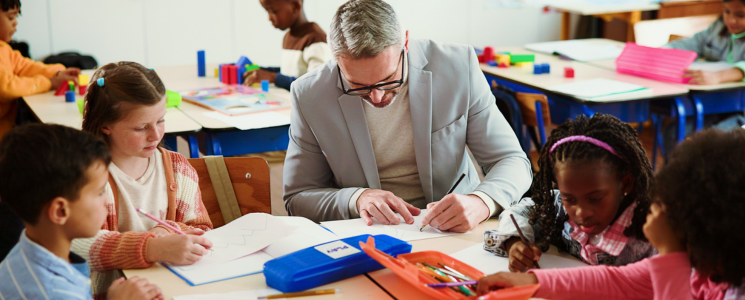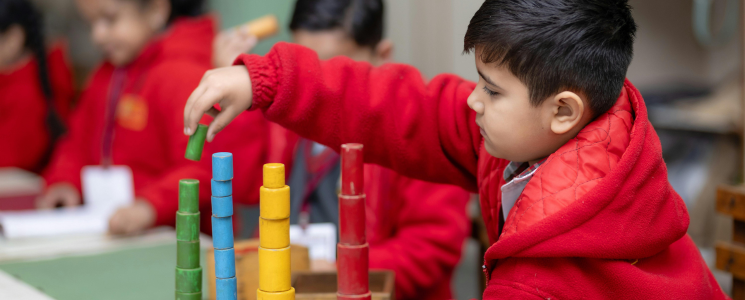Teaching Media Arts in Australia is an exciting and evolving journey. In a world where technology and creativity constantly merge, Media Arts gives students the chance to explore storytelling, digital communication, and design thinking in unique ways. However, to make lessons effective and meaningful, teachers must ensure that every classroom activity aligns with the Media Arts Australian Curriculum standards.
Aligning lesson plans with these standards helps maintain consistency, supports skill development, and ensures students are meeting national learning outcomes. Whether you’re new to teaching Media Arts or looking to refine your planning, this guide will walk you through practical strategies, examples, and professional insights to help you create lessons that both inspire and educate.
Understanding the Media Arts Australian Curriculum
Before designing lessons, it’s essential to understand what the Media Arts Australian Curriculum aims to achieve. Media Arts sits within the broader “The Arts” learning area, which also includes Dance, Drama, Music, and Visual Arts.
Media Arts encourages students to explore how media can influence the way we think, feel, and understand the world. It’s about more than just creating videos or animations. It’s about storytelling, communication, analysis, and creativity through digital media.
The curriculum focuses on two key areas:
1. Making: Students learn to create media artworks using technologies such as photography, video, animation, sound, and digital editing.
2. Responding: Students analyse and interpret media artworks, understanding how techniques, symbols, and narratives convey meaning.
Through these strands, students develop critical thinking, technical skills, and cultural awareness—skills that are vital in today’s media-driven world.
When planning lessons aligned with the Media Arts Australian Curriculum, teachers should balance both making and responding activities. This approach ensures students become both thoughtful creators and reflective audiences.
Step 1: Start with the Curriculum Standards
Every strong lesson plan begins with the curriculum. To align effectively with the Media Arts Australian Curriculum, start by reviewing the content descriptions and achievement standards for the relevant year level.
Each year level builds upon the previous one. For example:
-
Foundation to Year 2: Students explore simple media stories and identify characters and settings.
-
Years 3–4: They begin creating short media artworks using basic editing tools and explore audience engagement.
-
Years 5–6: Students plan, produce, and present more structured media works that communicate ideas and emotions.
-
Years 7–10: They experiment with advanced technologies, storytelling techniques, and audience interaction.
When planning, ask yourself:
- What knowledge and skills should students develop in this lesson?
- How does this connect to the achievement standards?
- What evidence will show that students have achieved the intended learning outcome?
Clearly defining these points ensures every lesson has purpose and direction. It also helps students understand why they are learning certain concepts, making the classroom experience more meaningful.
Step 2: Designing Creative and Purposeful Activities
Once you know the standards, it’s time to bring them to life with engaging classroom activities. Effective Media Arts lessons balance technical skills with creative freedom.
Encourage Hands-On Creation
Students learn best by doing. Give them opportunities to create short media projects, such as storyboards, photo essays, or short films. For example:
- For primary levels, students can create a short stop-motion animation using clay figures or drawings.
- In middle years, they can produce a short video commercial or documentary.
- For senior levels, projects could involve editing, sound mixing, and visual storytelling on digital platforms.
Each of these activities connects directly to the Media Arts Australian Curriculum, helping students apply techniques while exploring how meaning is shaped through design and narrative.
Promote Storytelling and Expression
Storytelling is the heart of Media Arts. Encourage students to create stories that reflect their experiences, cultures, and values. Provide prompts like “Tell a story about your community” or “Show how technology impacts our daily life.”
Through these projects, students learn to combine visuals, sound, and text to express ideas creatively. This also supports literacy and communication skills across other subjects.
Step 3: Integrate Media Analysis and Reflection
The Media Arts Australian Curriculum emphasizes not just creating but also understanding media. Students must learn to analyse how messages are constructed and how they affect audiences.
Analysing Media Artworks
Choose examples from films, advertisements, or digital art. Guide students to discuss questions like:
- Who is the intended audience?
- What emotions or ideas does this piece try to convey?
- What techniques or elements make it effective?
Encourage students to compare professional media works with their own projects. This reflection process deepens their understanding of design choices and storytelling techniques.
Encouraging Self-Reflection
After completing a project, have students write a short reflection. Ask them what they learned, what challenges they faced, and how they might improve next time. Reflection builds critical thinking and helps them see themselves as developing artists.
Step 4: Incorporate Technology Confidently
Technology is at the core of Media Arts. The Media Arts Australian Curriculum encourages students to use a variety of digital tools and platforms to create, edit, and share their work.
Using Accessible Tools
You don’t need expensive software to teach Media Arts effectively. Many free and user-friendly tools can help:
- Canva for digital posters and storyboards.
- iMovie or Clipchamp for video editing.
- Stop Motion Studio for animations.
- Audacity for sound editing.
Introduce tools gradually, starting with basic functions before moving to more advanced techniques. The goal is to build confidence and digital literacy, not overwhelm students with complexity.
Integrating Cross-Curricular Learning
Technology also allows for cross-curricular connections. For example, students can create short videos about Science experiments or History topics. This not only reinforces learning but also shows how Media Arts skills apply across all subjects.
By aligning technology use with Media Arts Australian Curriculum goals, you help students see the real-world relevance of their learning.
5: Foster Collaboration and Creative Thinking
Media Arts is rarely a solo activity. Collaboration is a fundamental part of the Media Arts Australian Curriculum, encouraging students to communicate, plan, and solve problems together.
Group Projects for Engagement
Assign group roles such as director, scriptwriter, camera operator, and editor. This mirrors real-world media production and teaches teamwork, leadership, and respect for diverse ideas.
Group projects also encourage negotiation and compromise, valuable life skills that extend far beyond the classroom.
Encouraging Innovation
Give students room to experiment. Allow them to take creative risks, try new techniques, and express unique perspectives. A supportive environment where mistakes are part of learning fosters confidence and innovation.
When students feel safe to explore, they produce work that is both meaningful and original, precisely what the Media Arts Australian Curriculum aims to achieve.
Step 6: Embed Cultural Understanding and Ethical Awareness
The media is a powerful tool that influences society and culture. The Media Arts Australian Curriculum places strong emphasis on ethical use and cultural awareness.
Cultural Representation
Encourage students to explore diverse stories and viewpoints. Discuss the importance of accurate, respectful representation in media. When appropriate, include examples of Indigenous Australian media artworks or collaborate with local communities for authentic learning experiences.
Digital Citizenship and Ethics
Teach students about copyright, consent, and online safety. They should understand the responsibilities that come with sharing creative work digitally. For example, when using images or music, discuss the importance of acknowledging sources.
This focus on ethics helps students become responsible creators and critical consumers of media, a key goal of the curriculum.
Step 7: Align Assessment with Learning Goals
Assessment plays a crucial role in ensuring that lesson plans align with the Media Arts Australian Curriculum.
Clear Criteria and Rubrics
Develop rubrics that reflect the curriculum’s achievement standards. Assess both making and responding components, including creativity, technical skills, communication, and reflection.
For example, criteria might include:
- Use of media techniques to convey meaning.
- Collaboration and problem-solving.
- Understanding of audience and purpose.
- Ability to analyse and critique media artworks.
Formative and Summative Assessment
Use ongoing formative assessments, such as peer feedback or progress check-ins, to guide learning during projects. Summative assessments, like a final media presentation or portfolio, provide evidence of achievement.
Meaningful assessment ensures students are learning effectively while keeping lessons aligned with national standards.
Step 8: Reflect and Refine Your Lesson Plans
Reflection is the final, and perhaps most valuable, step. After teaching a unit, take time to consider what worked well and what could be improved.
Ask yourself:
- Did students meet the learning objectives?
- Were the activities engaging and inclusive?
- How well did technology and resources support learning?
Student feedback can also be incredibly useful. Short discussions or surveys help you understand their interests and challenges. Over time, refining your lesson plans helps you create stronger, more engaging units that remain aligned with the Media Arts Australian Curriculum.
Inspiring Future Storytellers Through Media Arts
Aligning your lesson plans with the Media Arts Australian Curriculum is about more than compliance. It’s about creating learning experiences that empower students to think critically, create confidently, and communicate meaningfully.
When teachers combine a clear understanding of curriculum with creativity, reflection, and inclusivity, Media Arts becomes a transformative subject. Students learn not just to consume media but to shape it thoughtfully, responsibly, and imaginatively.
By planning with purpose, integrating technology wisely, and nurturing creative collaboration, you help students become the next generation of storytellers, curious, capable, and inspired to make their mark in the world of media.







